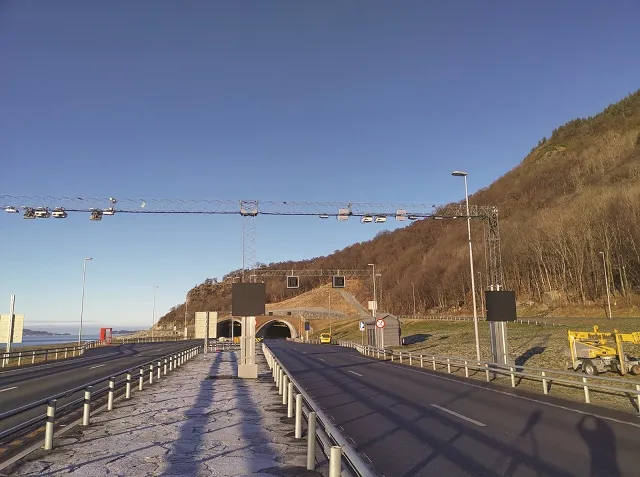This year’s ITS Europe conference saw the launch of a new weigh in motion (WIM) system from Kapsch TrafficCom. The innovative solution allows vehicles to be weighed whilst on the move, helping to control the number of overloaded heavy vehicles on the roads, increasing road safety, reducing wear and tear and lowering emissions. The solution uses a number of sensors to detect whether the vehicle exceeds the permitted weight along with a number of other enforcement functions. The sensors identify the vehicle b
June 5, 2013
Read time: 2 mins

This year’s ITS Europe conference saw the launch of a new weigh in motion (WIM) system from 4984 Kapsch TrafficCom. The innovative solution allows vehicles to be weighed whilst on the move, helping to control the number of overloaded heavy vehicles on the roads, increasing road safety, reducing wear and tear and lowering emissions.
The solution uses a number of sensors to detect whether the vehicle exceeds the permitted weight along with a number of other enforcement functions. The sensors identify the vehicle by its number plates, storing and evaluating this data via either a mobile enforcement vehicle or via a central system.
The new WIM solution can be used in combination with Kapsch Force, a comprehensive and fully integrated solution suite, which was launched at Traffex in Birmingham, UK in April 2013. The Kapsch Force enforcement suite supports the vast majority of enforcement applications – red light running, spot and section speed monitoring, lane enforcement, traffic surveillance and WIM. The new WIM solution is pre-integrated with Kapsch Force, minimising project risk and ensuring seamless processes across various enforcement applications, from capturing vehicle data to handle infringements according to a given legislative environment.
Peter Ummenhofer, ITS solutions manager at Kapsch TrafficCom says: “The pressure on costs for repair and maintenance of the road networks is increasing as more traffic uses the roads. Weigh in motion assures higher road safety, reduces wear and tear by a decreasing number of overloaded trucks and therefore is an important tool to avoid increasing uncontrolled heavy goods traffic.”
The solution uses a number of sensors to detect whether the vehicle exceeds the permitted weight along with a number of other enforcement functions. The sensors identify the vehicle by its number plates, storing and evaluating this data via either a mobile enforcement vehicle or via a central system.
The new WIM solution can be used in combination with Kapsch Force, a comprehensive and fully integrated solution suite, which was launched at Traffex in Birmingham, UK in April 2013. The Kapsch Force enforcement suite supports the vast majority of enforcement applications – red light running, spot and section speed monitoring, lane enforcement, traffic surveillance and WIM. The new WIM solution is pre-integrated with Kapsch Force, minimising project risk and ensuring seamless processes across various enforcement applications, from capturing vehicle data to handle infringements according to a given legislative environment.
Peter Ummenhofer, ITS solutions manager at Kapsch TrafficCom says: “The pressure on costs for repair and maintenance of the road networks is increasing as more traffic uses the roads. Weigh in motion assures higher road safety, reduces wear and tear by a decreasing number of overloaded trucks and therefore is an important tool to avoid increasing uncontrolled heavy goods traffic.”









